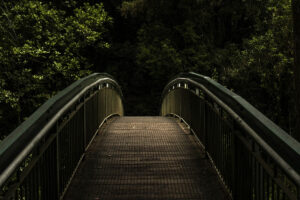
September 5, 2019; Washington Post
What began nearly 15 years ago as an outreach and education initiative of the South Dakota Symphony Orchestra has blossomed into a collaboration between one group of musicians trained in classical European traditions and another steeped in musical traditions of the Lakota from the Pine Ridge Indian Reservation. In October, the Lakota Music Project will perform three concerts in the nation’s capital.
David Gier, music director for the South Dakota Symphony Orchestra, explained to the Washington Post how the project’s identity was forged on a snowy evening in Pine Ridge when a group of symphony members met with the Porcupine Singers drumming circle.
“At one point,” Gier says, “the keeper of the drum said, ‘We sing the old songs; we’re not a powwow group. We really want to pass on our tradition to the next generation, because we feel it’s valuable.’”
Gier said the symphony members understood in that moment how much the two groups had in common.
Today, the collaboration, which has several distinct tracks of programming, is described this way on the symphony’s website:
Sign up for our free newsletters
Subscribe to NPQ's newsletters to have our top stories delivered directly to your inbox.
By signing up, you agree to our privacy policy and terms of use, and to receive messages from NPQ and our partners.
The Lakota Music Project is the South Dakota Symphony Orchestra’s flagship Bridging Cultures Program. Created between 2005–2008, the Lakota Music Project addresses a history of racial tension, builds bridges between whites and American Indians, and creates an environment of openness through the sharing of music. Essentially, it is a practical demonstration between white and American Indian musicians to advance cultural understanding.
Lakota Music Project concerts typically follow a template: thematically related pieces of music from each culture, followed by commissioned works that blend the two. To date, four pieces have been commissioned; the first, “Black Hills Olowan,” has “a traditional Lakota song embedded in a Western orchestral setting.”
While musicians from the Lakota Music Project have been touring together for a decade, the concerts in DC offer a higher-profile opportunity to showcase their work—musically and culturally. These performances, one at the Smithsonian’s National Museum of the American Indian and two at the Washington National Cathedral, are part of “a festival conceived and hosted by the PostClassical Ensemble (PCE) to spotlight Native American influences on American classical music. PCE is the Ensemble-in-Residence at the National Cathedral and a group that describes itself on its website as follows:
PCE is committed to radically rethinking the concert experience, to refreshing both format and repertoire. All PCE programing is thematic…Gil-Ordonez and Horowitz gravitate toward works deserving greater advocacy.
In the Post article, Horowitz explains, “I find the Lakota Music Project a visionary undertaking, and I feel it deserves to be more widely known.”
Emmanuel Black Bear, a well-regarded traditional singer who will be among the performers in the DC concerts, observed, “My view on coming to Washington is we’re getting a bigger stage for the project, so now some people are going to see our vision. That’s our hope…No matter which cultures it is, we can work together, and that’s how we create a better future. I know it’s a long shot. But if we can help it in any way and show people that we can work together, then we’re doing what we set out to do.”—Eileen Cunniffe











